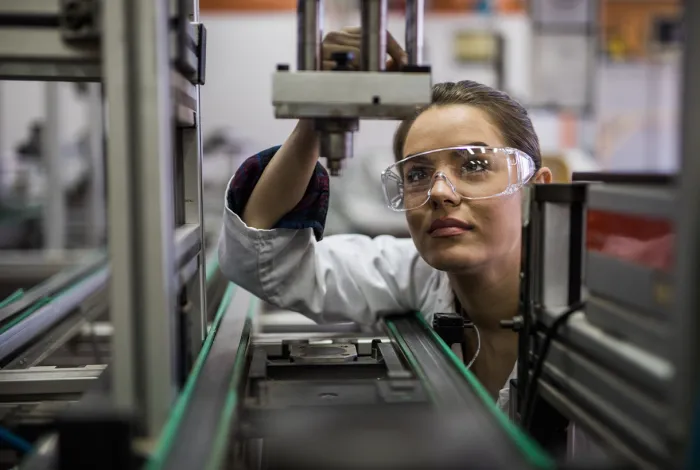
Inspection is a critical aspect of the manufacturing process. It involves checking all materials, products, or component parts at various stages during manufacturing to ensure that they meet specific requirements and standards. The purpose of the inspection is to prevent defects, reduce waste, and ensure that the final product is of high quality.
The inspection involves several steps, including visual inspections, measurements, and testing. Visual inspections involve checking for obvious defects such as scratches, dents, or other imperfections that can be seen with the naked eye. Measurements involve using specialized tools to ensure that the product or component part is the correct size and shape. Testing involves subjecting the product or component part to various stresses or conditions to ensure that it functions correctly.

There are several situations that warrant inspection. First, inspection is used to ensure that products or component parts meet specific regulatory or safety standards. This is especially important in industries such as aerospace, automotive, and medical devices, where products must meet strict safety requirements. Second, inspection is used to ensure that products or component parts meet customer requirements. This is critical in industries such as consumer electronics, where product quality and performance are key factors in purchasing decisions. Finally, inspection is used to ensure that the manufacturing process is functioning correctly and that there are no defects or issues that could affect product quality or performance.

There are different forms of inspection used in manufacturing, and each form has its unique purpose.
- Incoming Inspection: This form of inspection involves checking the quality of raw materials and components before they are accepted into the manufacturing process. The objective is to ensure that the materials meet the required specifications and are of good quality.
- First-piece Inspection: This inspection is done after the first product is produced to ensure that the manufacturing process is set up correctly and that the first product meets the required quality standards.
- Patrol Flow Inspection: This inspection involves inspecting the quality of products at different stages of the manufacturing process. It helps to identify defects and potential problems early on in the process, reducing the risk of producing defective products.
- Operator Inspection: This inspection is done by the operator at the production line to ensure that the product meets the required quality standards. It involves checking the product for defects and ensuring that it meets the required specifications.
- Last-piece Inspection: This inspection is done when the last product is produced to ensure that it meets the required quality standards. The objective is to ensure that the product is of good quality and meets the required specifications.
- Bench Inspection: This inspection is done after the product is produced and involves checking the quality of the product against the required standards. The product is checked for defects and to ensure that it meets the required specifications.
- Final Inspection: This inspection is done before the product is released to the market. It involves checking the quality of the product against the required standards, and the product is checked for defects to ensure that it meets the required specifications.
There are different forms of inspection used in manufacturing, and each form has its unique purpose. These inspections help to ensure that the products produced meet the required quality standards and are of good quality. By using different forms of inspection at different stages of the manufacturing process, manufacturers can reduce the risk of producing defective products and improve customer satisfaction.
References:
- “The Importance of Inspection in Manufacturing.” Quality Assurance Solutions. Accessed May 14, 2023. https://www.quality-assurance-solutions.com/importance-of-inspection-in-manufacturing.html.
- “What Is Inspection in Quality Control?” ASQ. Accessed May 14, 2023. https://asq.org/quality-resources/inspection.
- “Why Is Inspection Important in Manufacturing?” Marlin Steel. Accessed May 14, 2023. https://www.marlinwire.com/blog/why-is-inspection-important-in-manufacturing.
- “The Benefits of Inspection in the Manufacturing Process.” Eastern Applied Research. Accessed May 14, 2023. https://www.easternapplied.com/blog/benefits-of-inspection-in-the-manufacturing-process/.
Leave a comment